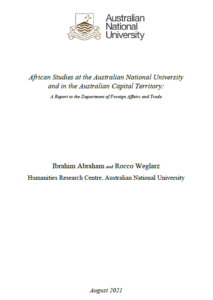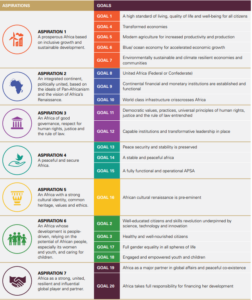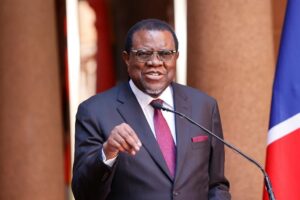Categories
-
ANU Africa Network
Posted on
by
This website was established in 2013 by David Lucas, and renovated and relaunched in 2020 as part of a project to increase awareness of Africa and African studies in the ANU and the ACT, funded by the Australian Government’s Department of Foreign Affairs and Trade.
Another outcome of that project was a major research report, published in August 2021, African Studies at the Australian National University and in the Australian Capital Territory, analyzing the past, present and future of the study of Africa at the Australian National University and the wider Australian University sector.

The major innovation on this updated website is the creation of the ACT Africa Expert Directory which lists experts on Africa from institutions around the ACT, primarily the ANU. We will continue to curate this list, offering a key resource for media, government and non-government organizations seeking expert facts and opinions on Africa. Individuals can request to be added to the list by contacting the website managers.
Another notable addition is the expanded directory of PhD theses on Africa produced in the territory’s universities, a solid measure of the vitality of the study of Africa in the city of Canberra.
Reviewing these directories, it is revealing to note that the vast majority of research on Africa is produced by disciplinary experts (environmental scientists, economists, demographers, etc.) rather than area studies experts. This means that the study of Africa is woven into the fabric of the research culture of the ANU and the ACT’s other universities in ways that are not necessarily apparent.
-
Shaping Africa’s Tomorrow: Unveiling the Second Ten-Year Implementation Plan!
Posted on
by
The African Union launched its Second Ten-Year Implementation Plan (STYIP) for Agenda 2063 on February 17, 2024.
The continent is moving forward, and leadership from the African Union is driving the direction of development with the powerful Agenda 2063.
There are rivers still to cross, but we don’t walk alone in Africa; we walk together.The document for the launch of the STYIP defines 7 aspirations for the continent, 20 accompanying goals, and 10 moonshot interventions to attain the aspirations.
:
Africa’s GDP growth trajectory (4%) is much higher than the global average (2.7% – 3.2%).
70% of African countries are already upper or lower-middle-income countries.
60% of Africa’s population is under 25, and by 2030 42% of global youth will be in Africa.
In 37 African countries, less than half the population can afford 1GB of data a month (giving context to improvements needed for the continent).
The STYIP launch notes that Africa has partnerships across the world and that it will “increasingly engage in alliances,” such as its recent membership in the G20.
The STYIP also notes that African countries are increasingly taking common positions on many issues pertaining to the continent’s development, such as the AfCFTA (the Continental Free Trade Agreement), Africa’s Common Position on Food Systems, Environment, and Climate Change Issues, and Collectively Addressing Pandemics such as Ebola and COVID-19.
This all comes at a time of shifting geopolitics, slow recovery from the COVID-19 pandemic, and slowing global growth in the decade preceding it. Africa is rising as a strong and growing continent.
Taken together, these facts and the language of the STYIP show that the stage is set for Africa to be a partner for countries like Australia for mutual benefit and development.
As Africa advances to a unified position in the world and the African Renaissance occurs, nobody will want to be left out of the chance to be friendly with this majestic and growing continent.
This short piece was written by Estelle Stambolie for the ANU African Studies Network.
-
Dr Karen Parry’s Biography
Posted on
by
From: https://researchers.anu.edu.au/researchers/parry-k
Circular Food System project: Theme Leader for Equity & Inclusion
ANU College of Science
E: Karen.Parry@anu.edu.au
I have recently completed my PhD entitled ‘Loosening the ties that bind: institutional analysis of young people’s livelihoods on smallholder irrigation schemes in Zimbabwe’. My research was linked to an ACIAR-funded project ‘Transforming irrigation in southern Africa’ (TISA), which I particpated in as a part-time research assistant. TISA has transitioned into a new project focusing on introducing circular food systems to smallholder irrigation schemes in Tanzania, Mozambique and Zimbabwe. My role in this new project is Theme Leader for Equity & Inclusion, and actiities include coordinating gender, youth and inclusion analysis to inform project implementation and support research on changes arising from inclusive design. This postdoctoral position will allow me to also scope additional research, and I anticpate a focus on young people’s perspectives on what constitutes an attractive livelihood around smallholder irrigation schemes and their engagement in local savings and loans groups. I am fortunate that my role requires me to make research trips to southern Africa on a regular basis.
-
Namibian President Hage Geingob dies at age 82
Posted on
by
Namibia is plunged into sorrow as the nation mourns the passing of President Hage Geingob at the age of 82. Having led the country since 2015, President Geingob succumbed to cancer at the Lady Pohamba Hospital in Windhoek, where he had been undergoing treatment.
In reflection of this significant loss, we extend our heartfelt condolences and hope that the departed president finds rest.
What do we know about Namibia?
Namibia’s rich political history encompasses its colonization by Germany in 1884, followed by occupation by South Africa in 1915. After World War II, South Africa annexed the territory and administered it as a mandate until 1988. The journey to independence was marked by the SWAPO guerrilla group’s war of independence, culminating in Namibia gaining its sovereignty in 1990.
SWAPO, now the ruling party, has transitioned from its Marxist roots over the years. President Hage Geingob assumed office in 2015, succeeding Hifikepunye Pohamba, who had served two terms. Geingob’s initial landslide victory in 2014 was followed by his reelection in 2019, albeit with a reduced majority. This marked a shift, as SWAPO narrowly lost its parliamentary supermajority in the same elections.
As we reflect on Namibia’s current state, the nation boasts a population of approximately 2.7 million (2023 est.), with an urbanization rate of 54.9% and a life expectancy of 63.7 years (2023 est.). The GDP stands at $12.372 billion (2019 est.), with a per capita income of $9,100 (2021 est.). According to the World Bank, Namibia is an upper-middle-income country. Namibia achieved this through its resource wealth (mostly gold and uranium), political stability, and sound macroeconomic management. A 2023 ranking by Yahoo Finance put Namibia 12th among the richest countries in Africa by GDP per capita.


